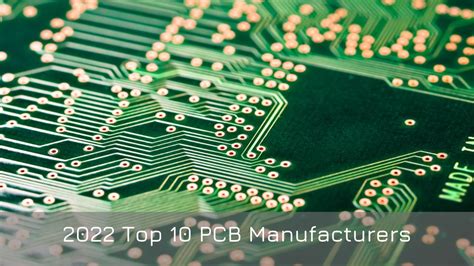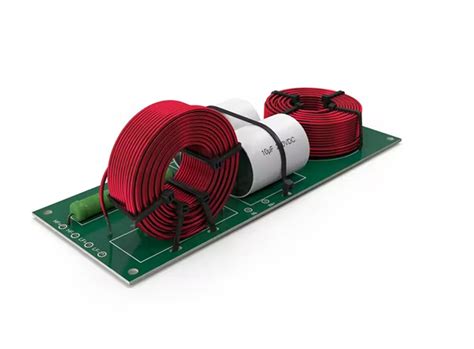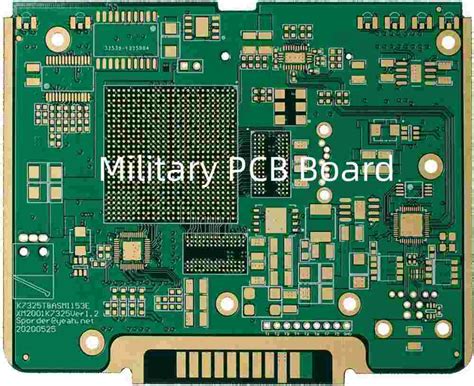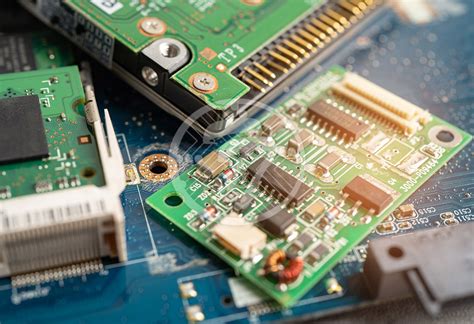Essential Guide to Gerber Files in PCB Fabrication

Key Takeaways
As you navigate the complexities of PCB manufacturing, it is crucial to understand the vital role that Gerber files play in this process. These files are not merely technical specifications; they are the blueprint that guides PCB manufacturing companies in turning your design concepts into physical circuit boards. One key takeaway is the importance of preparing your Gerber files with attention to detail, as errors at this stage can lead to increased PCB manufacturing costs and delays. When working with custom manufacturers, be aware that accurate submissions can significantly streamline the PCB manufacturing business process, ultimately saving you time and resources.
To provide clarity on this topic, consider examining the following table:
| Aspect | Impact on PCB Manufacturing |
|---|---|
| Quality of Gerber files | Directly affects fabrication accuracy |
| Submission format adherence | Determines compatibility with manufacturers |
| Attention to industry standards | Influences overall project cost and duration |
By focusing on these essential aspects of Gerber file management, you’ll enhance your understanding and execution in PCB fabrication, leading to more successful outcomes for your projects. For further insights and resources, you may find it beneficial to visit specialized platforms where you can learn more about effective strategies in managing Gerber files in your PCB manufacturing endeavors here.

Introduction to Gerber Files and PCB Fabrication
In the realm of PCB manufacturing, Gerber files serve a pivotal role in translating your design ideas into tangible electronic circuits. These files, comprising detailed information about each layer of the printed circuit boards, enable PCB manufacturing companies to understand and replicate your designs accurately. Grasping the significance of Gerber files can drastically influence the efficiency and effectiveness of your pcb manufacturing business. A well-prepared Gerber file not only reduces the overall pcb manufacturing cost, but also minimizes potential errors during the production process. It’s vital for you to ensure these files contain accurate specifications regarding pads, traces, and via placements, as inaccuracies can lead to costly delays and rework.
“Taking your time to thoroughly review your Gerber files before submission can save you considerable time and resources later.”
As you delve into the intricacies of PCB fabrication, remember that a clear understanding of these files contributes significantly to achieving a successful outcome in your projects. The integration of industry-standard practices in preparing your Gerber files will facilitate smoother communication with manufacturers and yield high-quality results. The importance placed on detail during this phase cannot be overstated; meticulous attention here paves the way for successful fabrication that aligns with both functionality and aesthetic standards in electronic design.

Understanding the Structure of Gerber Files
When diving into the realm of PCB manufacturing, it’s crucial to comprehend the fundamental structure of Gerber files. These files serve as the blueprint for your printed circuit board, and their significance cannot be overstated. Typically, you will encounter two primary types of Gerber formats: RS-274-D and RS-274-X. The former is a more basic version that requires additional control files for complete definition, while the latter encapsulates all needed information within a single file, making it easier for PCB manufacturing companies to interpret your designs accurately.
Every Gerber file comprises several layers that correspond to different aspects of your design, such as copper layers, solder mask layers, and silkscreen layers. You must ensure these layers are well-defined; otherwise, you may encounter unexpected results during production. Moreover, understanding symbols and coordinates used within these files is essential to prevent ambiguities that could lead to increased PCB manufacturing costs or even delays.
Consider also the importance of version consistency among different software platforms. Ensuring that your design software outputs a format compatible with your chosen PCB manufacturing business can save you valuable time and resources. A structured approach in preparing these files—by validating them through tools designed for this purpose—will facilitate smoother transitions from design to fabrication.
By harnessing this understanding of Gerber file structures in conjunction with best practices in PCB design preparation, you can achieve superior outcomes in your projects while minimizing the likelihood of common pitfalls associated with Gerber file submissions.
Preparing Your PCB Design: Best Practices
When you embark on the journey of PCB manufacturing, it is crucial to follow best practices that can enhance the efficacy and precision of your design. First and foremost, ensure that your design software is fully compatible with the Gerber file format, as this will be integral to how your PCB design translates during PCB fabrication. Pay close attention to the specifications of PCB manufacturing companies regarding layer stack-up, trace width, and spacing requirements; adhering to these guidelines is vital for avoiding costly errors in the PCB manufacturing cost. It is also advisable to conduct thorough checks on your design files, including verifying mechanical layers and the placement of components. An organized approach will not only minimize mistakes but also streamline communication with your PCB manufacturing business, ensuring a smoother transition from design to production. Moreover, consider implementing design rule checks (DRC) within your software prior to finalizing your files. This proactive strategy can help identify and rectify issues before submitting your Gerber files for production. Remember, a well-prepared PCB design can significantly influence both turnaround times and overall project costs, making it an essential step in the PCB manufacturing process.

Submitting Gerber Files to Custom Manufacturers
When it comes to pcb manufacturing, the process of submitting your Gerber files to custom manufacturers is a crucial step that can impact both the quality and the cost of your printed circuit boards. To ensure a smooth submission, it’s vital to understand the requirements and specifications provided by your chosen pcb manufacturing companies. Begin by double-checking your Gerber files for any potential errors, including layer alignment and file formats, as discrepancies can lead to increased pcb manufacturing costs or delays in production.
Once you’re confident that your files are accurate, package them according to the manufacturer’s guidelines, which may include a specific naming convention or a preferred file archive format. Providing additional documentation, such as a bill of materials (BOM), can further assist in communication with the manufacturers and help minimize misunderstandings during the fabrication process.
Furthermore, consider discussing timelines with your manufacturer prior to submission; this allows you to manage expectations regarding lead times associated with existing workloads in their pcb manufacturing business. By being thorough in your preparation and mindful of manufacturer requirements, you pave the way for a successful transition from design to finished product, ultimately leading to more streamlined production flows and potentially lower costs in subsequent projects.

Troubleshooting Common Issues with Gerber Files
When working with PCB files, it is crucial to address potential issues that may arise during the pcb manufacturing process. One common concern is the inconsistency between your design files and the output produced by pcb manufacturing companies. To mitigate this, you should always double-check your Gerber files against your original design, ensuring that all layers are properly included and that there are no discrepancies in dimensions or component placement. Another frequent issue involves missing or misconfigured parameters within the Gerber format itself. It’s vital you familiarize yourself with the specific requirements of each pcb manufacturing business you engage with, as they may have unique guidelines that differ from one another. Remember, not adhering to these specifications can lead to increased pcb manufacturing costs due to delays or rework. Additionally, consider running a validation check using specialized software tools designed for Gerber file management, as they can help identify and rectify problems before submission. This proactive approach not only streamlines your workflow but also enhances the overall quality of the final product in your pcb manufacturing projects.

Importance of Accuracy in PCB Fab Processes
When engaging with PCB fabrication, you must understand that accuracy is paramount. A small error in your Gerber files can lead to significant delays and increased PCB manufacturing costs. Whether you are running a PCB manufacturing business or collaborating with various PCB manufacturing companies, ensuring that your designs are precise is crucial for achieving the desired outcomes. Accurate Gerber files allow for seamless translation from design to production, reducing the risk of defects in the final product. Additionally, inaccuracies can cause misalignments during PCB assembly, which may lead to failures in electronic devices down the line. Therefore, it’s essential to adopt best practices when preparing your design files; this includes thorough validation and verification of all layers and components within your layout. Ultimately, investing time in accuracy during this stage not only enhances the reliability of your end product but also optimizes collaboration with manufacturers, ensuring a smoother process and potentially lower costs. Emphasizing accuracy could mean the difference between a successful batch run and costly revisions—something every PCB manufacturing company strives to avoid.
Future Trends in PCB Fabrication and File Formats
As technology continuously evolves, the landscape of PCB manufacturing is also undergoing significant transformations. With a growing demand for faster and more efficient processes, PCB manufacturing companies are increasingly adopting advanced techniques such as automation and streamlined workflows. This shift not only enhances productivity but also reduces the overall pcb manufacturing cost. Moreover, the emergence of new file formats designed to improve data handling and reduce errors in the design-to-manufacture cycle is another pivotal trend. These innovative formats aim to complement traditional Gerber files, helping designers provide more accurate and comprehensive documentation for their projects. As you engage with these developments, it’s essential to stay informed about the latest technologies that may influence your PCB manufacturing business. By embracing these trends, you can optimize your PCB production processes, ensuring that you remain competitive in an ever-changing industry landscape. Attention to detail in preparing your files will be crucial as the complexity of designs increases, safeguarding against common issues that may arise during fabrication and fostering better communication with manufacturers.
Resources for Learning More About Gerber File Management
To enhance your understanding of Gerber files and their critical role in PCB manufacturing, numerous resources are available. Online forums and communities dedicated to PCB design can provide valuable insights, tips, and advice from experienced professionals. Websites associated with leading PCB manufacturing companies often feature guides, tutorials, and FAQs that delve into the intricacies of Gerber file management. For instance, numerous tutorials aim to help you learn best practices for preparing your PCB design, which can significantly impact the overall PCB manufacturing cost. Additionally, consider investing in books or e-books focused on PCB design principles where you can find extensive information useful for your PCB manufacturing business. Specialized webinars and video courses also offer a visual approach to learning about the structure and submission processes of Gerber files, helping you to troubleshoot common issues effectively. By utilizing these resources, you’ll be well-equipped to navigate the complexities of PCB fabrication and ensure that your designs are accurately translated into successful manufactured products.
Conclusion
In summary, understanding Gerber files is crucial for anyone involved in the PCB manufacturing process. These files serve as the backbone of a successful design and fabrication, ensuring that every detail is accurately communicated to the manufacturer. By adhering to best practices when preparing your files, you not only streamline production but can also significantly reduce pcb manufacturing costs. When you work with reliable pcb manufacturing companies, it’s essential to provide clarifications regarding your design specifications and expectations. This cooperative approach can help mitigate potential issues and ensure that your project remains on track. As you consider embarking on a pcb manufacturing business, remember that the quality of your Gerber files directly influences the final product, so a meticulous and informed process is imperative for success. By keeping abreast of future trends in file formats and production techniques, you can further enhance your capability to create superior PCBs tailored to evolving market demands.
FAQs
What are Gerber files, and why are they important in PCB manufacturing?
Gerber files are a standard file format used to describe the printed circuit board (PCB) images. They contain vital information that guides PCB manufacturing companies during the fabrication process. Understanding their structure and purpose helps you ensure a smoother transition from design to production, which can ultimately reduce pcb manufacturing costs.
How can I ensure my Gerber files are ready for submission?
Before submitting your Gerber files, verify that all layers are included and that they adhere to industry standards. Double-check for errors such as missing drill holes or incorrect dimensions. Using software tools designed for preparing PCB layouts can enhance accuracy before you engage with a pcb manufacturing business.
What are common mistakes to avoid when submitting Gerber files?
Some common mistakes include neglecting to provide all necessary layer data, using incorrect file formats, or failing to validate your designs against manufacturing specifications. Even minor errors in your Gerber files can lead to increased costs and delays from pcb manufacturing companies, so thorough review is crucial.
How do discrepancies in my Gerber files affect the PCB manufacturing process?
Discrepancies may cause misalignment in the PCB layers, impacting both functionality and performance. It may lead to additional charges due to rework or redesign, thus inflating your overall pcb manufacturing cost, which you naturally want to avoid.
Are there specialized tools for managing Gerber files?
Yes! Numerous software applications assist with editing and validating Gerber files. These tools can help streamline the submission process and ensure compatibility with pcb manufacturing companies, making it easier for you during the whole production journey.






